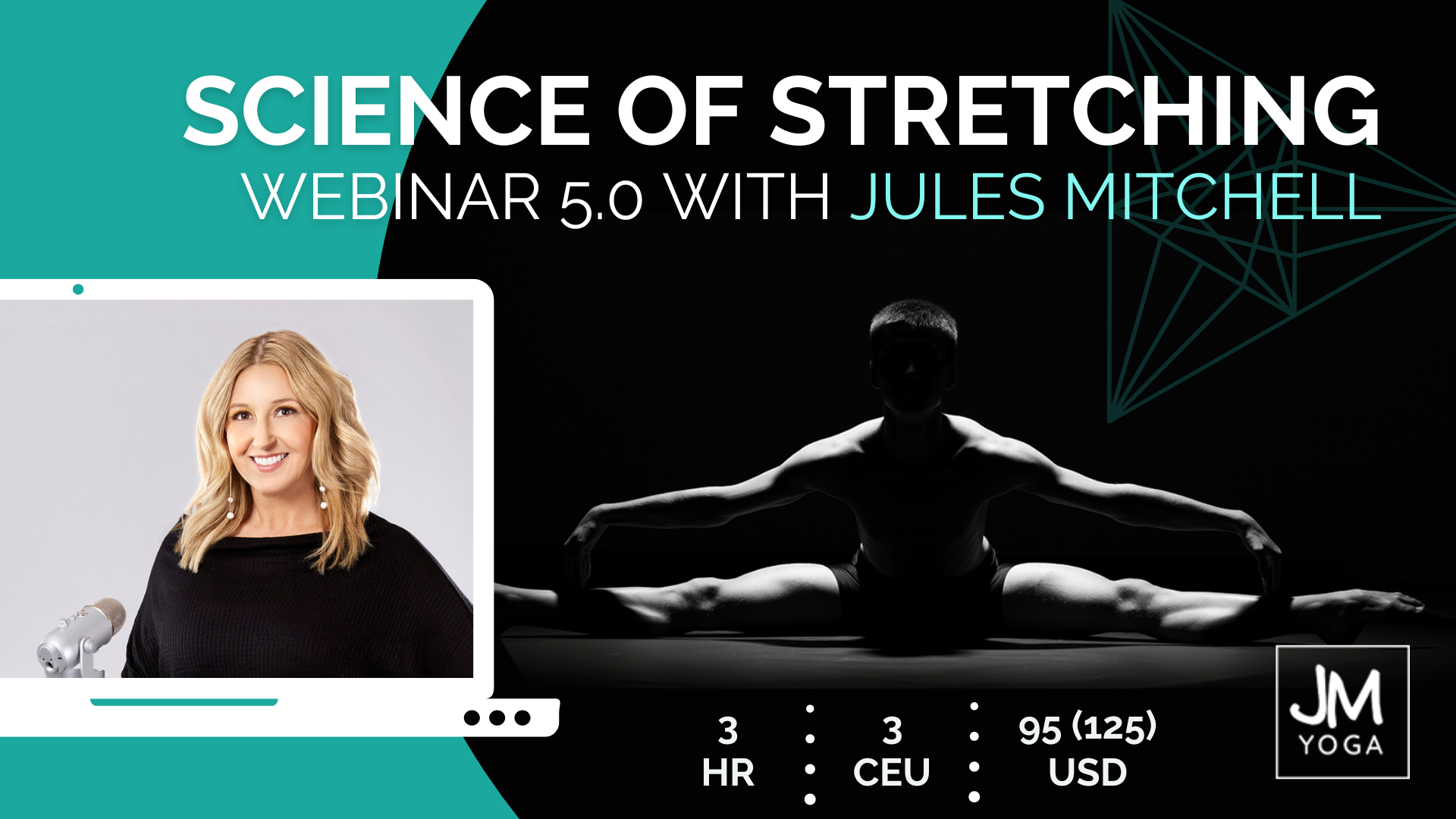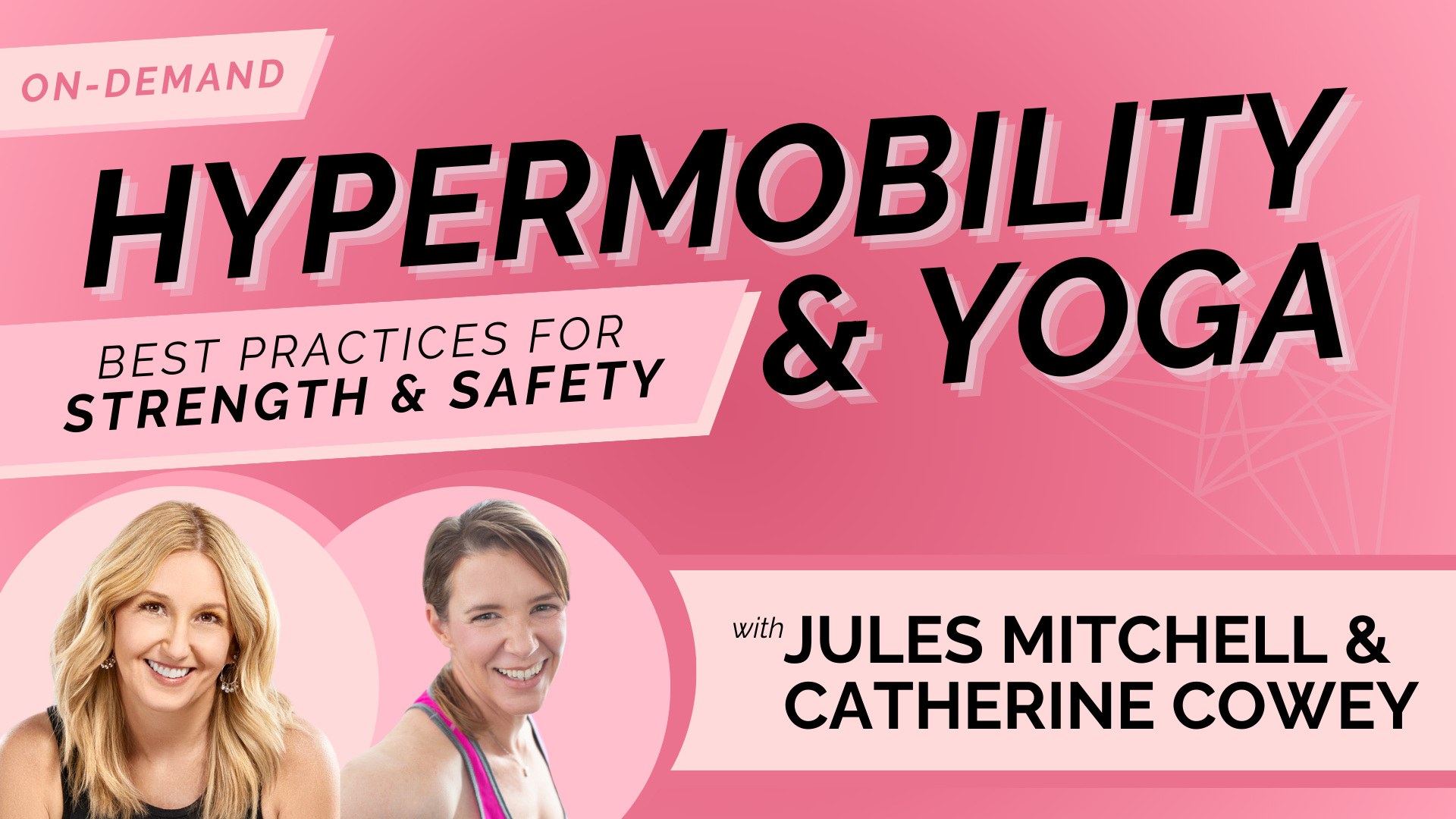Yoga and Hypermobility: Strategies for Yoga Teachers
In May 2024, my colleague Catherine Cowey and I offered a free webinar for yoga teachers on how you can recognize hypermobility symptoms in your students and how to modify your yoga classes to support this population.
Here are some of the topics we covered:
- Learning about the types of hypermobility
- What range of motion is best
- Incorporating weights and isometrics into your yoga classes
- Importance of rest
- Why breathing mechanics before pranayama
- Creative use of yoga props and other equipment
Yoga and Hypermbolity: More Than Just Theory
If you’ve studied with me, you know how important I think education for yoga teachers is. I can lecture for hours (no joke). So could Catherine (she has so much experience working with the hypermobile population, she can speak volumes on it). We really made it a point to keep the lecture short and offer some concrete examples you can use right away in your yoga classes. We wanted to make sure you left with a handful of new ways to use props to explore your favorite yoga poses.
Here are some of the examples we offered:
- Downard facing dog pose and upward facing dog pose > examples of short-range work
- Prasarita padottanasana (wide-legged forward fold) w/ a strap > using props as load
- Lateral breathing exercise > highlight beneficial breathing mechanics
- Side plank and utpluthih dandasana > using props to support and create external lines of tension
- Savasana with all the props and weighted blankets > why this population needs more support to rest
The webinar was 45 minutes and introduced the concepts we teach in a larger, more comprehensive on-demand course. You can watch the recording below and get information about the full-length course after the video.
Key points from the free Yoga and Hypermobility webinar.
Here is the TLDW (too long didn’t watch):
Should people with hypermobility avoid yoga?
The short answer is no. That said, they will want to modify many poses to help them with proprioception and stability while minimizing a painful response. They will benefit tremendously from the use of props, helping them create muscular tension that is often an elusive sensation in this population.
Does yoga cause hypermobility?
No. Hypermobility is an inherited connective tissue condition that falls on a very wide spectrum. Historically it has been overlooked in the research/medical community but that is slowly starting to change. Just doing a lot of yoga won’t change your genetics, but it can make you appear more flexible. Appearing flexible does automatically imply hypermobility.
Can yoga/exercise reverse hypermobility?
The short answer is no. That said, even in hypermobile populations, we can apply the normal rules of adaptation. If your goal is to stiffen compliant connective tissue, you would apply the same loading principles you would for non-hypermobile tissues. You might not achieve certain levels of stiffness, but there is still room for adaptation.
More Yoga Teacher Tips for Hypermobility
If you found this free webinar useful and want more, you’re in luck! Catherine and I have a complete 4-hour course including video, lecture, PDFs, study questions, and a certificate for up to 6 CEUs. You have unlimited streaming access to the course (including on the Kajabi mobile app). You can get more info here.
Hypermobility & Yoga:
Best Practices For Strength & Safety
In Hypermobility & Yoga, you will learn:
-
What is hypermobility, who does it affect, and what helps manage symptoms
- "Feeling tight" - what causes it and how do we shift that sensation
- Methods to increase stability and proprioception
- Practical ways to create rigidity and tension in yoga postures
Extend Your Learning:
Online Education With Jules

The Science of Stretching Webinar 5.0
This webinar is for teachers and students who have an insatiable curiosity about stretching, what it does, and how it works, while accepting that conventional stretching wisdom isn’t always accurate. Eligible for 3 CEUs. This course is offered in January and July each year. Learn more >

